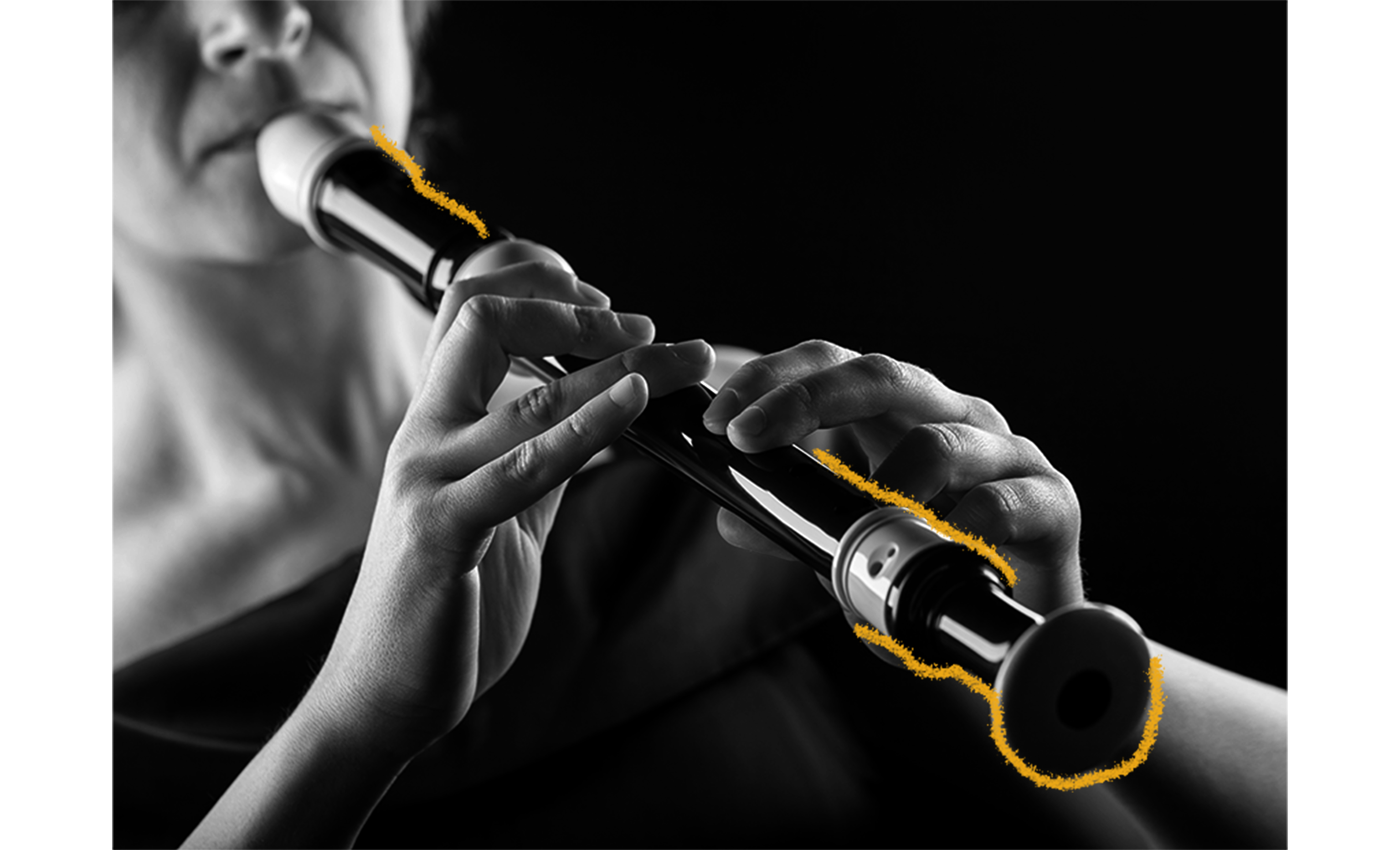The recorder has its roots in the vertical flute, a particularly ancient instrument. Its ancestors include the Japanese shakuhachi and the South American quena as well as a variety of primitive instruments that have been found across the globe. The recorder itself came into being in Europe during the Middle Ages and was frequently used in lively performances from the middle of the 15th century to the 17th century. In fact, the recorder was extremely popular during the Baroque period. However, due to the growing influence of the flute, which differed in volume and timbre, the recorder largely disappeared in the late 18th century. However, nearly 150 years later, the recorder experienced a revival in popularity in the 20th century, in large part thanks to Arnold Dolmetsch, a London violin teacher who researched historic musical instruments, learned to play the historical recorders he collected, and ultimately began manufacturing new recorders. (Figures like Peter Harlan, who created the German-style recorder, and Yoshitaka Sakamoto, who introduced the recorder to Japan and petitioned the company that would later become Yamaha to produce it, also helped the instrument spread once more.) The Dutch musician Brüggen, who become a virtuoso on the recorder, played a massive role in its resurgence. Subsequently, a number of additional virtuosos emerged and gave new significance to the recorder. Renewed interest in researching old musical instruments and musical education also helped spread the recorder’s popularity. Today, the recorder is often used in musical education classes in schools, making it one of the most widely played musical instruments.

Your go-to guide for weird history facts
Subscribe to the FREE daily email that makes learning about history fun.


